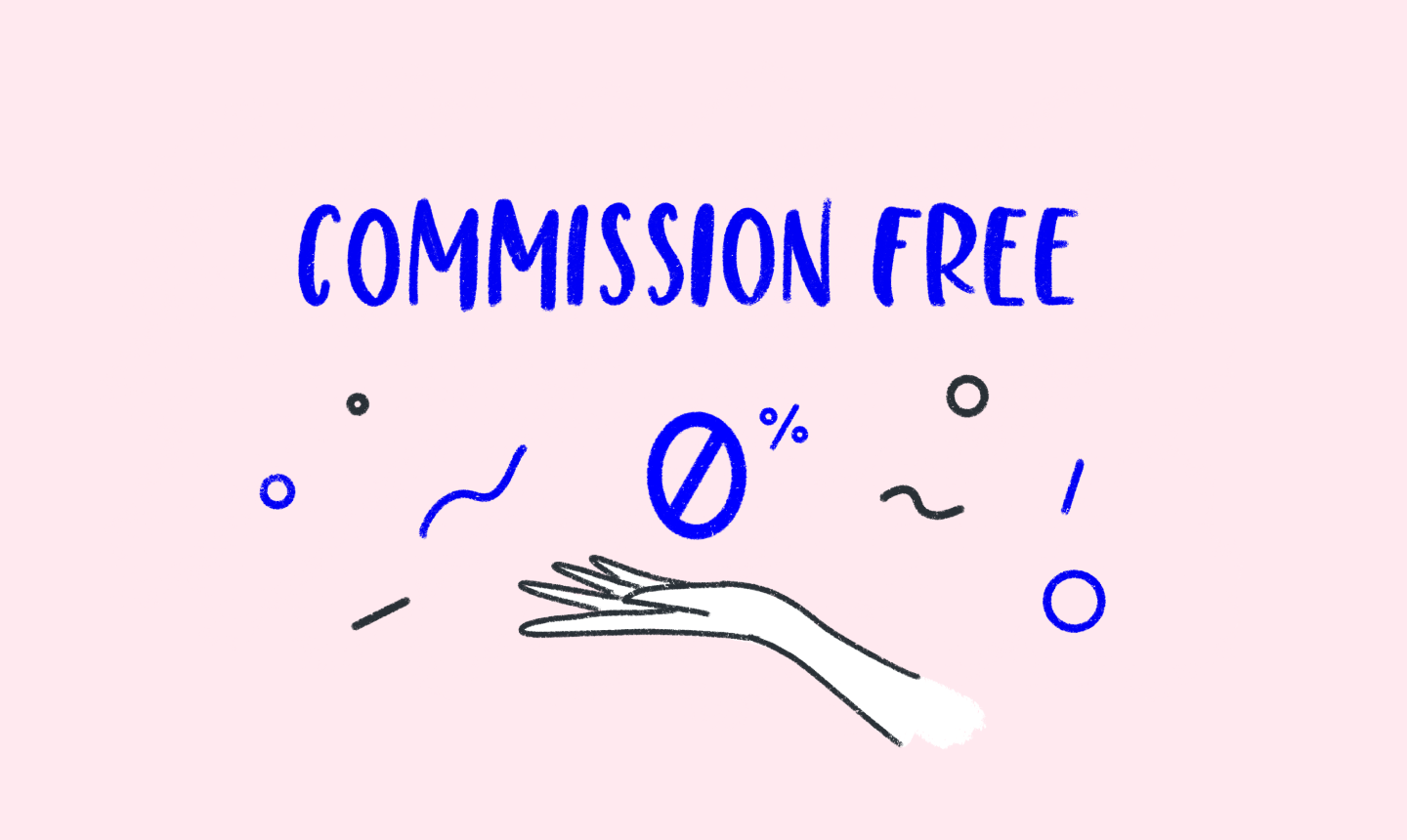Being able to buy stocks online has democratized the stock market by eliminating intermediaries and reducing the friction that used to exist in the investing process. With simpler, more intuitive products more people are becoming investors — and doing so with smaller amounts of money. All you need are some basics to get you started.

What should I consider before buying a stock?
Before buying a stock, learn as much as you can about the company. The Internet has democratized information in a way that makes educating yourself on public companies easier than ever. You might approach this by browsing company announcements, such as recent earnings, and reading news coverage from trusted sources. Google News aggregates many sources in one location if you’re looking for a place to start.
As you’re doing your homework, one important piece of information to glean is the price to earnings ratio, defined as the amount of money investors are willing to pay for the amount of profit the company makes. Some investors may be willing to pay more because they perceive the company to be “safe” or it is growing at a fast pace. However, keep in mind that just because investors aren’t willing to pay a lot for the amount of profit the company is making doesn’t mean it’s a bad investment. It could actually mean the opposite because the company could be growing quickly without people noticing.
Another metric to consult is a stock’s beta, which is its measure of volatility over the previous five years. The beta is often considered in juxtaposition to the S&P 500, a standard of stability. Companies that fluctuate significantly relative to the S&P have higher betas. A beta greater than 1 is considered high risk while a beta lower than 1 is considered low risk. High risk does not mean a company is one to avoid; it just makes it one to watch closely if you choose to invest. Investors who do not wish to watch a stock very closely will often opt for lower beta companies.
How do I choose an online broker?
Buying stocks online requires a broker, which is a person or entity that is licensed to buy and sell stocks via an exchange. There are many platforms to choose from, with investors selecting brokerages based on their objectives and personal preferences. Some variances across online brokers include features, fees, ease of use, and customer support. Upon selecting a broker, you’ll have to fill out an application, provide ID, and select your preferred method of funding the account.
Online brokers
You can think of online brokers as the most bare-bones option. They are simply places to buy and sell stocks. Given this, they work well for people who want to experiment with buying and selling stocks without a large financial commitment, or for people who have prior knowledge around how to make informed investment decisions. Since little more than technical support is offered by these platforms, the fees per transaction are low, if there is any cost at all. Online brokers will often provide links to third-party resources, but other than that you’re on your own.
Online brokers with assistance
For a little more money per transaction, you can work with a discount broker with assistance. These platforms provide an additional layer of support relative to spartan online brokers and may provide more information about the stocks you are trading or published newsletters with tips.
Full-service brokers
A full-service broker is an equivalent of working with an actual stockbroker and therefore provides a more personalized, white-glove experience than basic online brokers. Once you find a full-service brokerage, he or she will take the time to get to know you both personally and financially. The broker will take into account certain factors about your life when crafting a financial plan with objectives that are tailored to your financial realities and life-stage. Full-service brokers can help with other services as well, such as budgeting, retirement planning, and providing general financial advice. Given the high-touch nature of their client relationships, full-service brokers are a more expensive option but can be worth the investment for people who value personalization. Some accounts can be set up for as low as $1,000.
Money managers
A money manager is someone who you hire to invest your money for you, which is different from a broker who provides you with a detailed plan but leaves the actual investing to you. Money managers work with large portfolios and, as a result, charge significant fees. If you’re someone who can hand over at least $100,000 to a money manager, though, the fee likely won’t bother you.
Can I buy stocks directly from a company?
Many companies let you buy and sell stocks directly. This is called a direct stock purchase plan (DSPP). Oftentimes you’ll be able to reinvest your dividends, which are a portion of the company’s profit that’s given to investors. Going the direct route often means paying lower fees than by going through a broker. Sometimes, though, companies only let you buy stocks directly if you already own shares or are an employee. It’s not uncommon for companies to require a minimum investment, or limit transactions to particular times and prices. Sometimes companies will allow shareholders to receive their dividends in the form of stock rather than in the form of cash.
Where can I buy stocks online for free?
Outside of trading stocks using imaginary money, which plenty of platforms offer so that you can get practice, one way to trade for free is by tracking down companies that offer free trading. Free, or zero-commission, trading has become increasingly popular as of late, with large, legacy brokerages committing to slash their fees entirely in response to shifting consumer behavior. Financial journalists have dubbed this movement the “brokerage wars,” with end consumers ultimately benefiting from the increased competition.

Among a new crop of online brokers to emerge is Public, which makes it possible to invest in any stock for any amount of money — commission-free. With a mission to make the public markets more accessible to more people, the platform curates stocks within themes such as “Tech Giants,” “Most Popular” (top picks by trade volume within the community), and “The Future is Female” (female-led companies). It also offers select stocks in “slices,” which means that customers can buy into a portion of a stock instead of ponying up the money required to buy one full share.
Which stocks should be on my list?
Instead of isolating a portfolio of specific stocks to invest in, many people will follow a set of best practices to help them make more informed decisions that align with their unique objectives and financial goals. So, what are some tips for making investment decisions that work for you?
To begin with, find out which sectors of the market are performing well. Online stock brokers will often have tools that allow you to browse stocks by their sector. Some, like Public, provide intuitive clusters of themes to help investors explore categories of stocks and discover new companies as they make their investment decisions.

Next, look at the stock’s balance sheet to see if its growth is contingent upon the performance of the stock market, or if it grows regardless of whether the market’s overall performance. Timing is another important factor. Clinical studies, for example, can have a significant impact on pharmaceutical stocks. Earning reports can also affect the performance of a stock. Lastly, study a stock’s technical analysis and chart position.
All of this information is crucial to making a rational decision. A good rule of thumb is to articulate your goals and objectives before you start investing so that an established set of metrics guide your decisions instead of just gut feelings. This approach will help you avoid pitfalls like the sunk cost fallacy, which is when people hold onto an investment longer than necessary just because of the resources (time and money) they’ve invested.
How do I diversify my portfolio?
A diverse portfolio of stocks will make you a more resilient investor and may also lead to a greater return on investment. Certain dynamics in the market can affect different sectors in different ways, so if your portfolio is heavy in a particular area, you could see outsized losses (or gains) that impact your entire investment strategy. Exchange-traded funds, or ETFs, present a popular way to diversify since they offer the diversification of a mutual fund (via a grouping of investments) with the ease of trading afforded by a typical stock investment.
How many stocks should I buy?
There is no universal answer to the number of stocks you should invest in because that depends heavily on your personal finances and your investment goals. Investors aiming for a strong diversification strategy will create balance across several stocks instead of putting all of their eggs in a single basket.
Advancements to online investing products have made it possible for investors to buy portions of a share, something the industry has dubbed “fractional investing.” Fractional investing is especially relevant to new investors because it lowers the barrier to entry for high-cost stocks such an Amazon, which trades at well over $1,000 per share. With fractional investing, investors of all financial backgrounds can own a piece of companies that might have previously been out of reach to the everyday investor.
Public is one brokerage that offers this type of investing. Via a feature called “slices,” Public users can buy into pieces of the companies they believe in instead of footing the bill for a full share.

Bottom line
The Internet has proven to be a great force of democratization across many industries. Thanks to Amazon, people can access a seemingly infinite store of online products from all over the world. Online rental and consignment companies like Rent the Runway and TheRealReal have democratized luxury goods, enabling people of all income levels to wear their favorite designers. YouTube has birthed some of the highest-selling recording artists of our time and a new crop of influencers who are more recognizable than some traditional celebrities.
Similarly, technology has demystified the stock market and made it more accessible to more people. Today, you can get started investing with as little as $100 and build your nest egg over time as you become educated in the best practices of smart investing. The key for beginner investors is to define your objectives at the beginning, do the proper research into which tools and partners will best help you meet your goals, and put time into learning about the public markets and the companies that comprise them.

